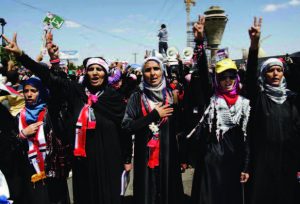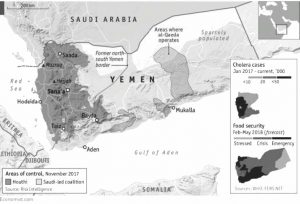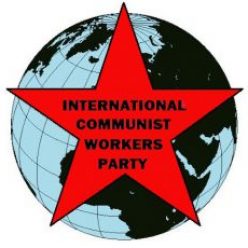Fight to End Borders, wars and Wage Slavery with Communist Revolution

Yemini Women During Arab Spring 2011
Masses in war-torn Yemen are enduring a dire humanitarian crisis. Famine threatens tens of millions as Saudi bosses’ blockades have prevented most food imports. Water supplies are dwindling and aquifers are shrinking. Saudi air strikes have targeted water infrastructure. Cholera, preventable and treatable, is sweeping the region in possibly the worst epidemic ever.
“Every house in Sana’a [Yemen’s capital] has broken windows from the air strikes,” reported a friend who lived there. Over half the workforce is jobless. Over a million government and electrical workers haven’t been paid in months.
Thousands of workers have defied the economic crisis and political repression with strikes and sit-ins. But the crisis demands something different. The desperate and angry Yemeni masses must mobilize for communism.
Civil War and Inter-Imperialist War
“The civil war is a proxy war between the Saudis and Iran,” said a Yemeni friend in the US.
“And behind Saudi Arabia and Iran are the US and Russia,” a comrade replied.
But there’s more.
Yemen’s location has long made it a crossroads for trade and cultural exchange, and a focus of conflict. It abuts the Red Sea, facing Djibouti across the Bab el-Mandeb chokepoint. Its Arabian Sea coastline includes Aden, once the world’s second-busiest port.
Yemen was key to the Ottoman and British empires. Today the Chinese imperialists want a stabilized Yemen to help them expand “One Belt One Road” to Saudi Arabia. They want both Iran and Saudi Arabia as strategic partners. They, too, have supported the deadly Saudi coalition assault on Yemen.
Imperialism means ever-sharpening rivalry and increasingly deadly wars. Only communism can end them.
Marxism in Yemen: 1963-1990
In Yemen and worldwide, masses seeking to end exploitation joined and supported Marxist-led national liberation movements. In 1963, armed struggle began against British control. Four years later, the National Liberation Front (NLF) came to power in South Yemen.
The People’s Democratic Republic of South Yemen became a socialist state in 1970, aligned with the Soviet Union. Moscow gained strategically important access to its naval facilities. The US and Saudi rulers backed the Yemeni Arab Republic in the north.
But Yemeni socialism was actually capitalism. The World Bank wrote approvingly in 1979 that Yemen had “demonstrated significant ability in firmly pursuing economic development [with] the implementation of policies geared at increasing the productivity of the economic institutions.”
The two Yemens merged in 1990 after the Soviet Union collapsed. Socialist state ownership led to the emergence of a new capitalist ruling class, like everywhere else. This is usually misrepresented as “persistent corruption.”
Many ask how communists can avoid this “corruption.” The main answer is that we mobilize for communism, not national liberation or socialism.
Communism will abolish private property, money and wealth accumulation. The working masses will plan and manage production, through international communist party collectives. Our goal will not be “development” but meeting everyone’s needs.
Since the Arab Spring: 2011-2017
During the 2011 “Arab Spring,” masses rebelled against unemployment, poverty and “corruption.” Protests spread after government forces killed over a thousand people. Some tribal and military leaders backed the opposition to Ali Abdullah Saleh, Yemen’s ruler for 30 years. He was forced from power and his deputy Abdrabbuh Mansour Hadi became president in February 2012.
Hadi faced an Islamist insurgency led by al-Qaeda since 2009, a secessionist movement in the south, and Shia rebels (“Houthis”) who had organized in the north since 2004. Saleh supported the Houthis. They took over Sana’a in fall 2014, triggering civil war. A Saudi-led military coalition intervened in August 2015 to support Hadi’s government in Aden.
US cruise missiles and drones had supposedly targeted al-Qaeda training camps since 2009. They had already killed over a hundred Yemeni civilians. The Obama administration now sold the Saudis tanks, planes, bombs, precision-guided missiles and white phosphorous, a deadly chemical weapon. Thousands of US Air Force missions refueled Saudi warplanes.
While the US-backed Saudis and their Yemeni puppets were fighting the Iranian-backed Houthis, the Houthis were actually fighting Al-Qaeda. In February 2016 Al-Qaeda forces and Saudi-led coalition forces were both seen fighting Houthi rebels in the same battle.
The winners so far are Al-Qaeda and the US capitalists who profit from weapons sales. Yemen’s capitalist economy has collapsed. The big losers are the Yemeni masses. Their goal must not be to save or stabilize capitalism in Yemen, but to mobilize for communism to destroy it.
2017: Latest Crisis Adds Urgency to Fight for Communism
Chinese and Saudi bosses signed an agreement in March 2017 to build the first drone factory in the region in Saudi Arabia. Large Russian and US arms deals with Saudi Arabia don’t include drone manufacture.
US President Trump has sent even more “boots on the ground” supposedly to fight Al-Qaeda. In May he announced a huge arms deal with Saudi Arabia, the largest arms sale in U.S. history.
But in October, a bipartisan group of US representatives openly questioned this strategy. The pro-US imperialist Council on Foreign Relations published an article (Nov.-Dec. 2017) claiming that the Yemen war had nothing to do with regional interests after all.
This imperialist faction seems ready to leave Saudi Arabia to the Chinese, and fight them elsewhere. Liberal pro-Democrat groups like Code Pink are starting to mobilize to demand an end to US military involvement in Yemen. But another “anti-war” movement won’t end the horrific suffering there.
By December 2017 the Houthis had little use left for Saleh. Seeing that his influence was declining, he switched sides and was promptly killed by his former allies. This has escalated the conflict, strengthened the Houthis’ hand, and made the situation more desperate.
“My two brothers are on opposite sides,” mourned our Yemeni friend. “We used to hope that the Saudis would drive out the Houthis, but now I see that they’re just as bad.”
He and many more, in Yemen and worldwide, need to take seriously the communist alternative. Our Party awaits them with open arms.


